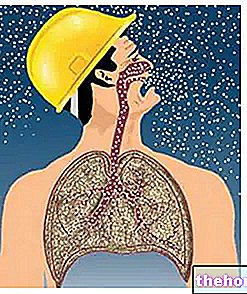Generality
Respiratory rate is defined as the number of breaths taken by an individual in a minute.
Each single respiratory cycle is composed of an inhalation phase (a little shorter) and an expiratory phase, as well as two pauses, one of which is very short at the end of the inhalation and a longer one (approximately 1/5 of the total duration of the "act) at the end of the expiration.
Normal Values

Respiratory rate at rest is 12-16 breaths per minute. During strenuous exercise, this frequency can reach up to 35-45 breaths per minute.
Not surprisingly, in the heart rate increases there is a parallel increase in the respiratory rate, with a relationship of approximately one breath for every 4-5 cardiac contractions.
Children and babies
In the newborn and throughout the first year of age, the respiratory rate is about 44 breaths per minute; subsequently it gradually decreases, so much so that at 5 years it is equal to about 20-25 breaths per minute. In the adult, as anticipated, it is around 14 respiratory cycles per minute and increases again, albeit to a modest extent, in the elderly.
Curiosity
The volume of air that enters and exits the lungs during a single resting breath is called the tidal volume. Multiplying this figure by the respiratory rate, the so-called minute ventilation is obtained; to learn more, see: spirometry.
Causes of altered respiratory rate
As well as in relation to muscular activity, the respiratory rate values may vary in relation to body size, age, sex, state of health, digestive activity, ambient temperature and body position (decrease in position horizontal).
Higher in women than in men, respiratory rate also increases in febrile states and abdominal and thoracic conditions that limit the depth of breath.
Tachypnea is defined as an increase in respiratory rate beyond physiological limits (> 20 cycles per minute in the adult).
The frequency of breaths also increases in rarefied oxygen environments, such as those typical of the high mountains.
Tachypnea and Hyperpnea
In the presence of tachypnea (or polypnea) the breaths become shorter, while in the so-called hyperpnea the acts increase in depth (the two conditions are often - but not necessarily - associated).
In addition to the causes already mentioned, tachypnea can accompany the last months of pregnancy, hyperthyroidism, anemia, heart failure, peritonitis and painful syndromes of the pleura, peritoneum or chest wall (in these cases it represents a mechanism compensatory to the reduced depth of breath, adopted by the patient to protect himself from pain).
Finally, for elements of an emotional nature, during the physical examination many patients have respiratory rates higher than usual.
Bradypnea
Bradypnea is defined as a decrease in respiratory rate below physiological limits (<12 breaths per minute in the adult, <20 / min in the 3-12 year old child, <25 / min in the 1-3 year old child, <30 / min under one year of age).
Completely physiological during sleep, the reduction in respiratory rate is typically observed in opiate or alcohol intoxication, in the case of brain tumors and in metabolic alkalosis.




























